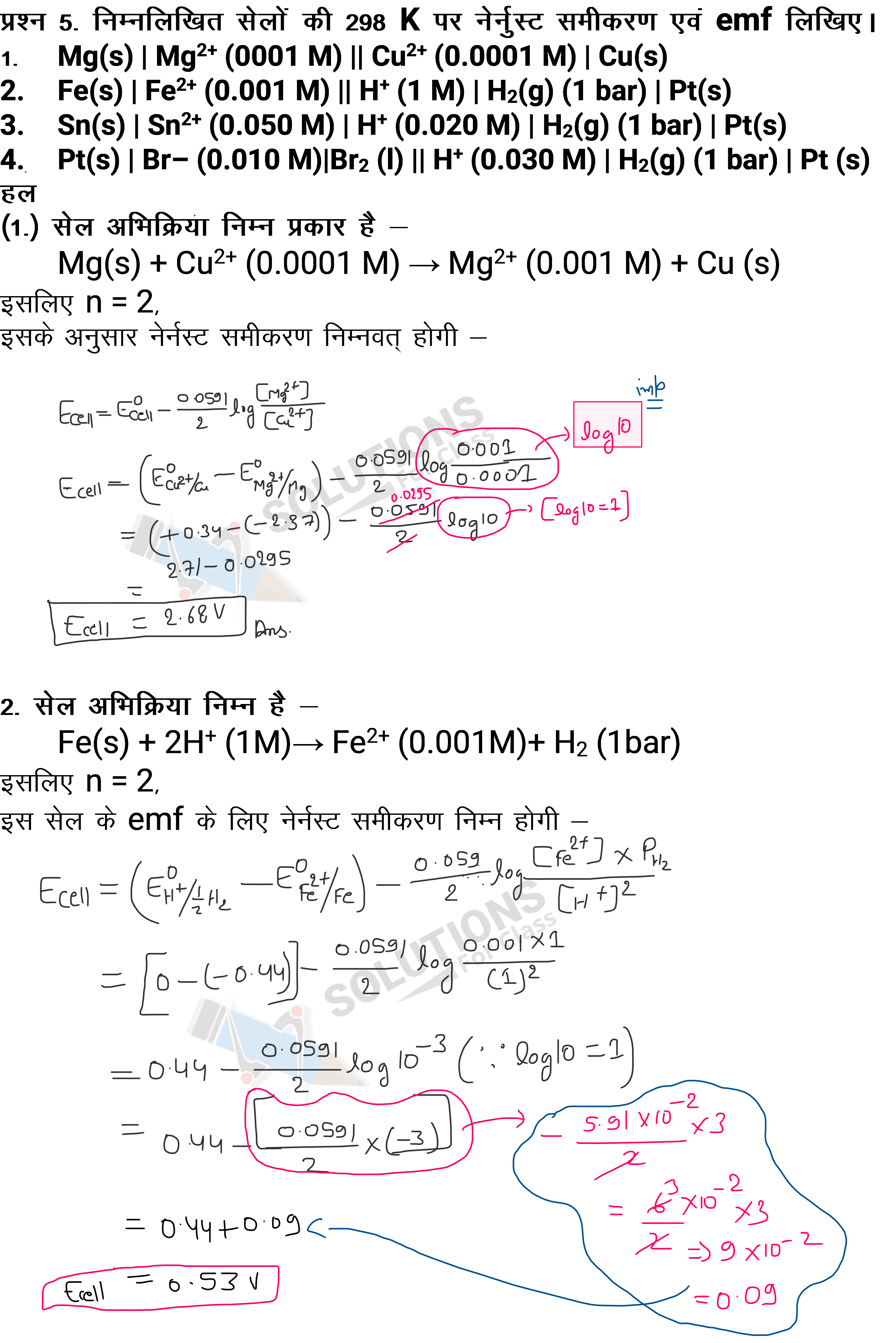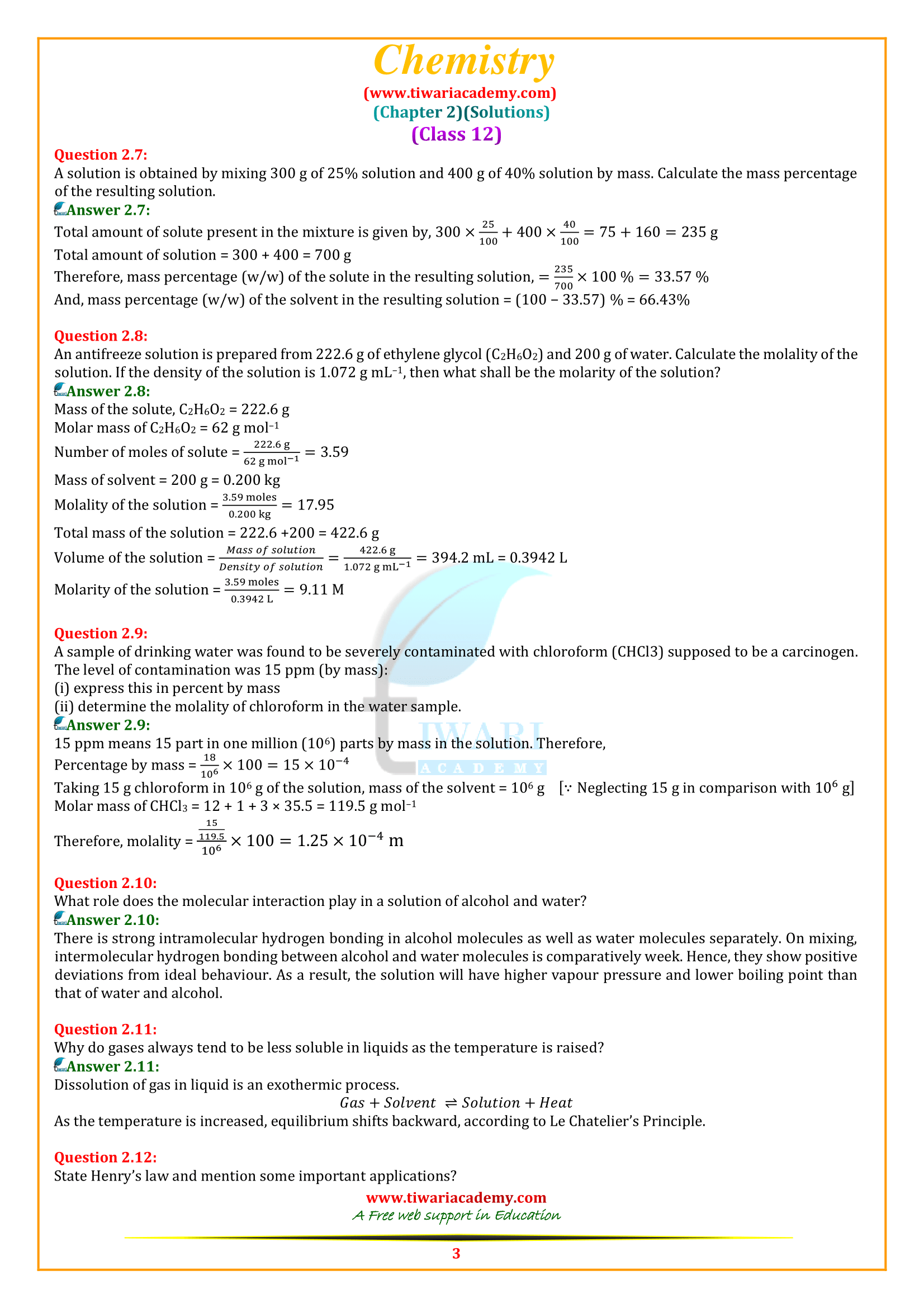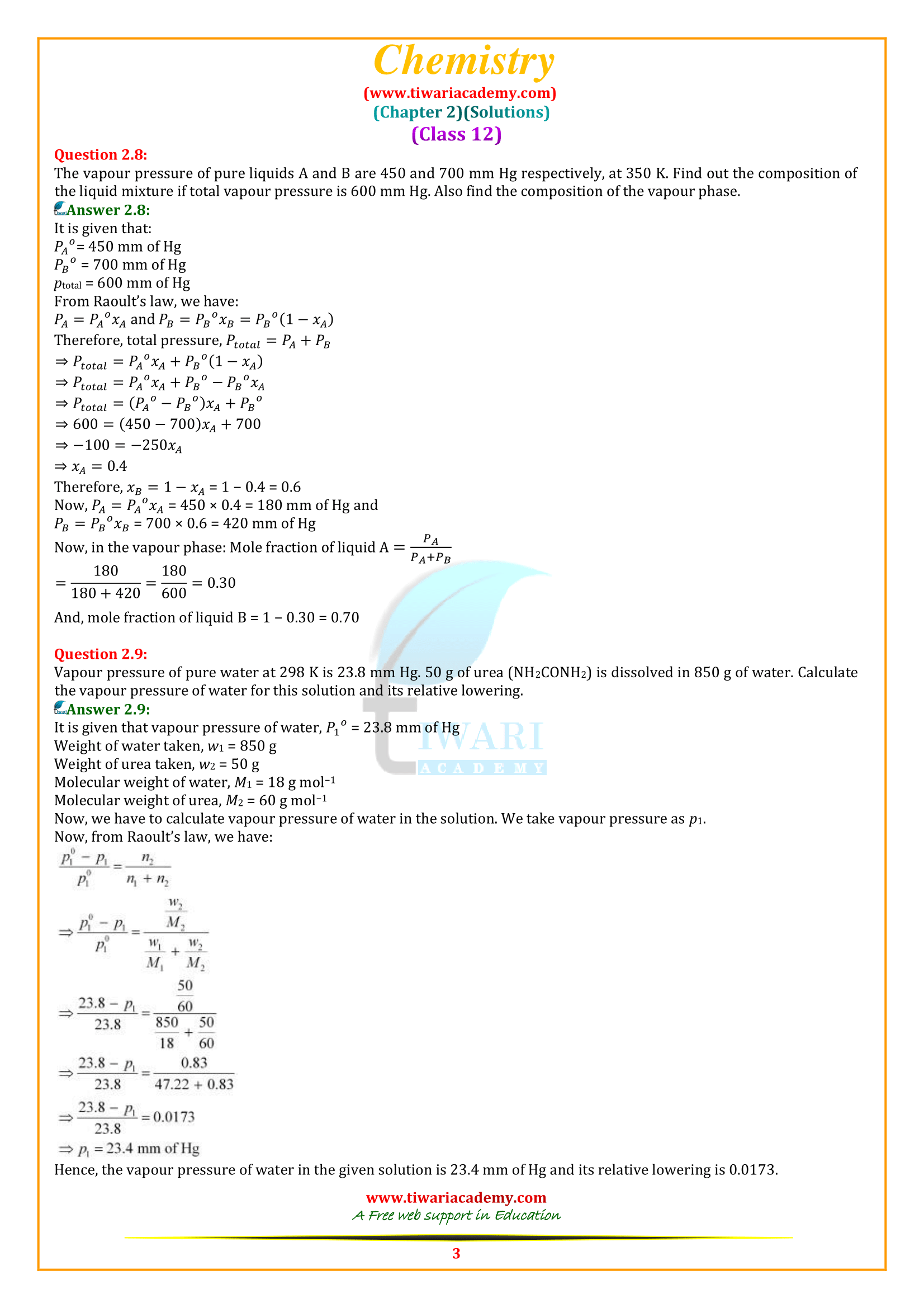
NCERT Solutions for Class 12 Chemistry Chapter 2 Solutions AglaSem Schools
NCERT Solutions for Class 12 Chemistry Chapter 2 - Solutions = 0.12 mol Moles of water = = 4.44 mol Therefore, mole = = 0.0263 Q 2.6) Calculate Henry's law constant when the solubility of H 2 S (a toxic gas with a rotten egg-like smell) in water at STP is 0.195 m Answer 2.6: It is given that the solubility of H 2

Solutions Short Notes Solution Chapter In Chemistry Class 12 Notes Hot Sex Picture
NCERT solutions for Chemistry Class 12 Chapter 2 Solutions Intext Questions Intext Questions | Q 1 | Page 37 Calculate the mass percentage of benzene (C 6 H 6) and carbon tetrachloride (CCl 4) if 22 g of benzene is dissolved in 122 g of carbon tetrachloride. VIEW SOLUTION Intext Questions | Q 2 | Page 37

NCERT Solutions for Class 12 Chemistry Chapter 2 Solutions
NCERT Solutions for Class 12 Chemistry: Download Chapterwise PDFs. Chapter 1 The Solid State. Chapter 2 Solutions. Chapter 3 Electrochemistry. Chapter 4 Chemical Kinetics. Chapter 5 Surface Chemistry. Chapter 6 General Principles and Processes of Isolation of Elements. Chapter 7 The p-Block Elements.

NCERT Class 12 Chemistry Chapter 2 Exercise Solutions PDF PDFfile
The NCERT solutions for class 12 chemistry chapter 2: Solutions is given below in pdf as well as image form. NCERT Solutions for Class 12 Chemistry Chapter 2: Solutions - Important Topics A Solution is a homogeneous mixture of two or more chemically non-reacting substances whose composition can be varied within certain limits.

NCERT Solutions for Class 12 Chemistry Chapter 2 Solutions
NCERT Solutions for Class 12 Chemistry Chapter 2 deals with Solutions. This chapter involves liquid solutions and their formations. Furthermore, the chapter involves the properties of the solutions. This chapter has information on types of solutions and their formation.

Chemistry Class 12 Ncert Solutions Chapter 1 The Solid State Class 12 Gambaran
Students can download the CBSE Class 12 Chemistry NCERT Solutions PDF for free from Vedantu. Class 12 Chemistry teaches about organic, inorganic, and physical chemistry. It builds the base of applied science. Each chapter in these NCERT Solutions helps students to acquire in-depth knowledge of chemical compounds, polymers, biomolecules and.

NCERT Exemplar Class 12 NCERT Exemplar Chemistry Solutions Chapter 2 Solutions Click to
NCERT Solutions for Class 12 Chemistry Chapter 2 - Solutions. This chapter deals with types of solutions, properties, Raoult's law, the concentration of solutions, vapor pressure of liquid solutions, abnormal molar masses, and colligative properties. NCERT Solutions for Class 12 Chemistry Chapter 3 - Electrochemistry

NCERT Solutions for Class 12 Chemistry Chapter 2 Solutions Free PDF
NCERT Solutions Class 12 Chemistry Chapter 2 Solutions have solutions to all the queries students might face.These NCERT Solutions are made by an expert mentor who has a long time of experience in the subjects.Our experts suggest that NCERT Solutions Class 12 is the best way to prepare for board exams.. Solutions - a solution is a homogenous mixture of substances most probably two or more.

NCERT Solutions for Class 12 Chemistry Chapter 3 Electrochemistry (विधुत रसायन) Solutions For
Prime Members Can Enjoy Unlimited Free Shipping, Early Access To Lightning Deals and More. Choose From a Wide Selection Of Informative and Comprehensive Books For You.

NCERT Exemplar Class 12 NCERT Exemplar Chemistry Solutions Chapter 2 Solutions Click to
NCERT solutions of class 12 Chemistry - Chapter List: • Chapter 1: Solid State. • Chapter 2: Solutions. • Chapter 3: Electrochemistry. • Chapter 4: Chemical Kinetics. • Chapter 5: Surface Chemistry. • Chapter 6: Principle Of Isolation Of Elements. • Chapter 7: P Block Elements. • Chapter 8: D And F Block Elements.

NCERT Solutions for Class 12 Chemistry Chapter 2 in Hindi and English
Class 12 Chemistry Chapter 2 Solutions are defined as homogeneous mixture of two or more components. This chapter gives an overview of different types of solutions. Various laws and its derivations are provided here stepwise for easy understanding.

NCERT Solutions for Class 12 Chemistry Chapter 2 Solutions
The NCERT Solutions for Class 12 Chemistry can be utilised by the students to prepare for the board examination and to solve the exercise questions of the Class 12 Chemistry Chapter 2. All the solutions are created according to the latest CBSE Syllabus for 2023-24 and its guidelines.

Class 12th Chemistry Solutions NCERT Solution CBSE 2023
Question 1. Calculate the mass percentage of benzene (C 6 H 6) and carbon tetrachloride (CCI 4) if 22 g of benzene is dissolved in 122 g of carbon tetrachloride. Solution: Mass of solution = Mass of benzene + Mass of carbon tetrachloride = 22 g +122 g = 144 g Mass percentage of benzene = ∴ Mass percentage of CCl 4

NCERT Solutions for Class 12 Chemistry Chapter 15 Polymers
We provide solutions for questions given in Class 12 Chemistry text-book as per CBSE Board guidelines from the latest NCERT book for Class 12 Chemistry. The topics and sub-topics in Chapter 2 Solutions are given below. Ex 2.1 - Types of Solutions. Ex 2.2 - Expressing Concentration of Solutions. Ex 2.3 - Solubility.

NCERT Solutions for Class 12 Chemistry Chapter 2 in Hindi and English
Chapter 1: Solutions Chapter 2: Electrochemistry Chapter 3: Chemical Kinetics Chapter 4: The d & f Block Elements Chapter 5: Coordination Compounds Chapter 6: Haloalkanes and Haloarenes Chapter 7: Alcohols, Phenols, and Ethers Chapter 8: Aldehydes, Ketones, and Carboxylic Acids Chapter 9: Amines Chapter 10: Biomolecules

Ncert Solution For Class 12 Chemistry Chapter 3 Electrochemistry
Chapter 2 Solutions Chapter 3 Electrochemistry Chapter 4 Chemical Kinetics Chapter 5 Surface Chemistry Chapter 6 General Principles and Processes of Isolation of Elements Chapter 7 The p-Block Elements Chapter 8 d-and f-Block Elements Chapter 9 Coordination Compounds Chapter 10 Haloalkanes and Haloarenes Chapter 11 Alcohols, Phenols and Ethers